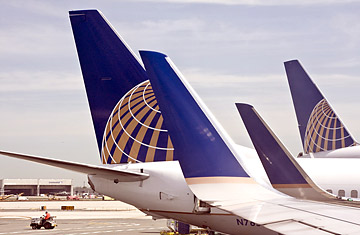
Bankruptcy worked so well for Continental in 1983 that it went back again in 1990. In the early 1980s, dealing with recession and industry deregulation, the airline was in the midst of battle with its labor unions over wage reductions when it entered bankruptcy protection — a legal standing that let the company more forcefully negotiate, and then reneg on, its collective bargaining agreements. (Bankruptcy law was later changed to make it tougher for companies to break union agreements, partly because of the Continental case.)
In 1990, Continental again went bankrupt, but this second time around the issues were different. Spiking fuel costs and a heavy debt load from an aggressive expansion strategy, plotted by the same chairman who broke the unions less than a decade before, overtook the company. After months of trying to stay out of bankruptcy, and seeing attempts — like a deal that would have sold international routes to Delta — fall short, Continental again filed. Bankruptcy protection let the airline continue flying — partly because the bankruptcy court locked partner airlines into continuing to fulfill their obligation — even as Continental was able to put their creditors on hold. After two-and-a-half years, Continental re-emerged as a stand-alone company and today is the world's ninth largest airline.
See pictures of the history of air communications and in-flight entertainment.